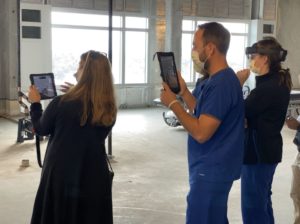Flexible and Future Forward
UK Healthcare, 12th Floor ICU Fit-out
←
To Project Types
Lexington, KY | 61,000 SF
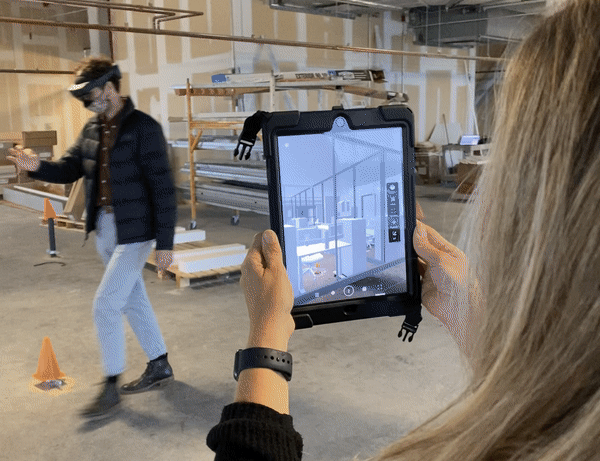 Using AR during the project helped immerse people in the space, allowing staff to give real-time feedback. This tool helped ease communication and allowed the design team to virtually sit at the nurse station and test which window placement provided the ideal views to support their workflow and patient care.
Using AR during the project helped immerse people in the space, allowing staff to give real-time feedback. This tool helped ease communication and allowed the design team to virtually sit at the nurse station and test which window placement provided the ideal views to support their workflow and patient care.
The fit out of the 12th floor inside UK HealthCare’s Albert B. Chandler Hospital brings together medical and cardiovascular ICU patients that were previously spread across multiple floors. This new ICU unit includes modifications and upgrades informed by what has worked well in previous locations within the hospital as well as lessons learned from patients and staff during the COVID-19 pandemic. The ICU supports the compassionate care of UK HealthCare medical professionals with functionality, respite, and state-of-the-art technology.
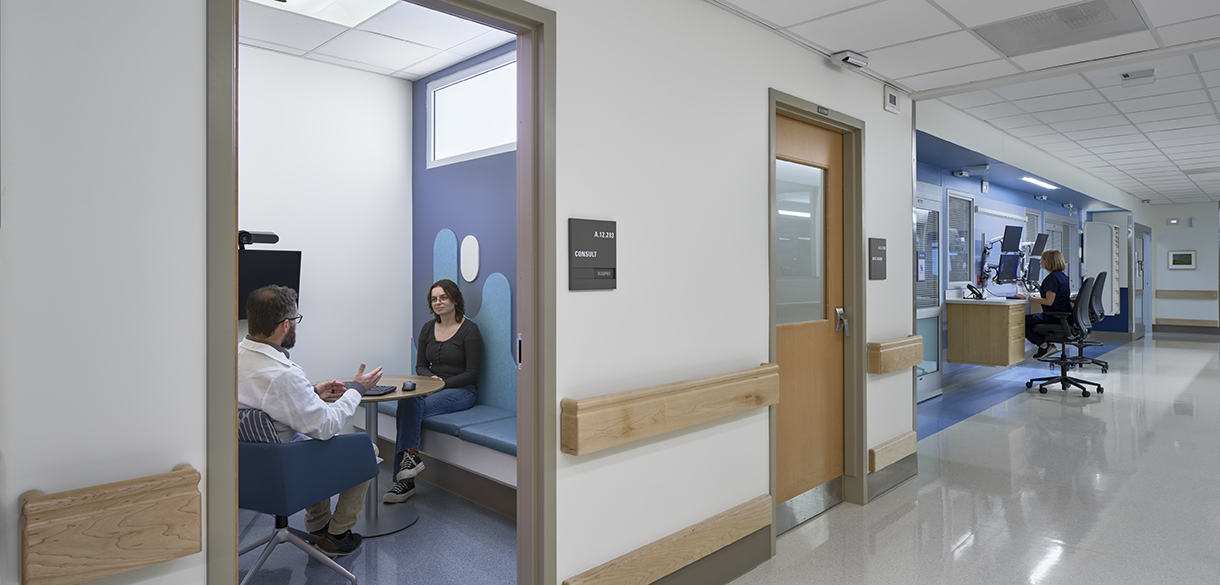 Private consult rooms and decentralized nursing stations line corridors that are wider than the standard eight-feet thanks to a design that captured some space from patient rooms.
Private consult rooms and decentralized nursing stations line corridors that are wider than the standard eight-feet thanks to a design that captured some space from patient rooms.
During COVID-19, many hospitals were forced to adapt and create makeshift solutions. Many of these solutions have been incorporated into this project. One key example can be found in the unit’s corridor design. Typical hospital corridors are eight feet wide. Our design team found a creative way to take a little bit of space from the patient rooms and incorporate it into the corridors as flexible space. Day-to-day, this helps keep corridors clear. In the event of a significant incident such as a major accident or another pandemic, this flexible space can house IV poles, airway carts, ventilators, and other specialized equipment.
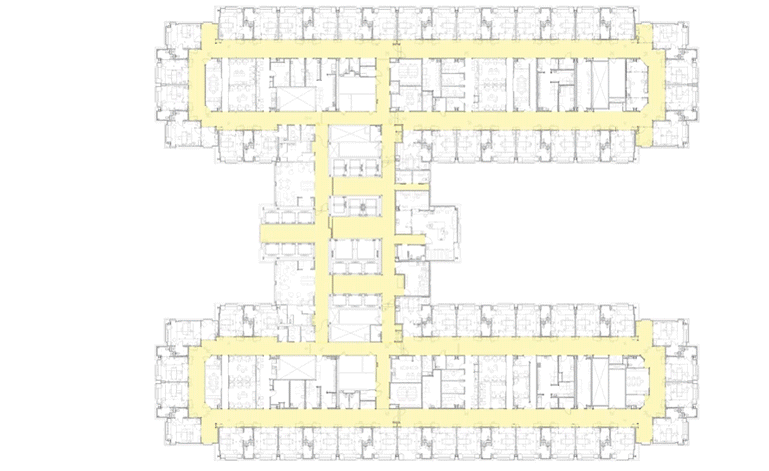
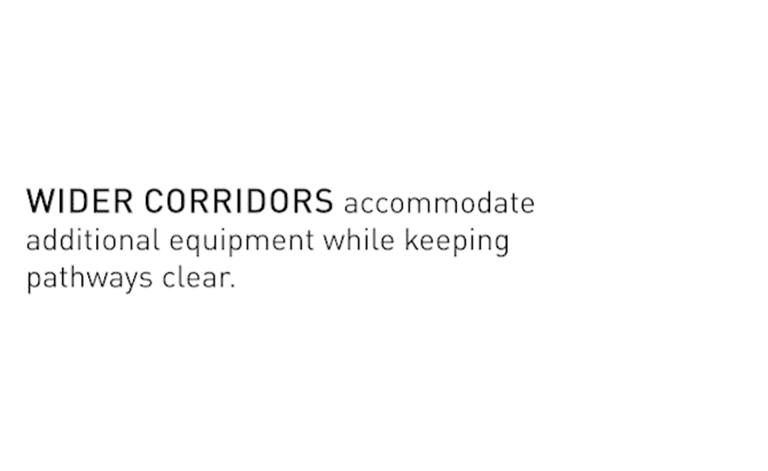
The intentional thought given to our staff’s health to prevent burnout better prepares us for future patients who need the complex care of ICUs.
The fit-out increased the number of ICU rooms to 64. The rooms feature a pass-through that allows staff to administer intravenous medicine from outside the room should the patient pose a communicable disease risk. Intravenous tubes safely attach to the headwalls (rather than lying on the floor) as they travel from the patient’s bed, into the pass-through, and onto the pole in the corridor. All rooms have negative pressure capability (to prevent airborne disease transmission) and all can be doubled to handle increased patient load during an emergency. The floor is also home to Kentucky’s only HealthCare’s Serious Communicable Disease Lab, which includes six patient rooms and dedicated pharmacy. This allows teams to evaluate and care for patients with population-threatening diseases before they’re transferred to larger hospitals.
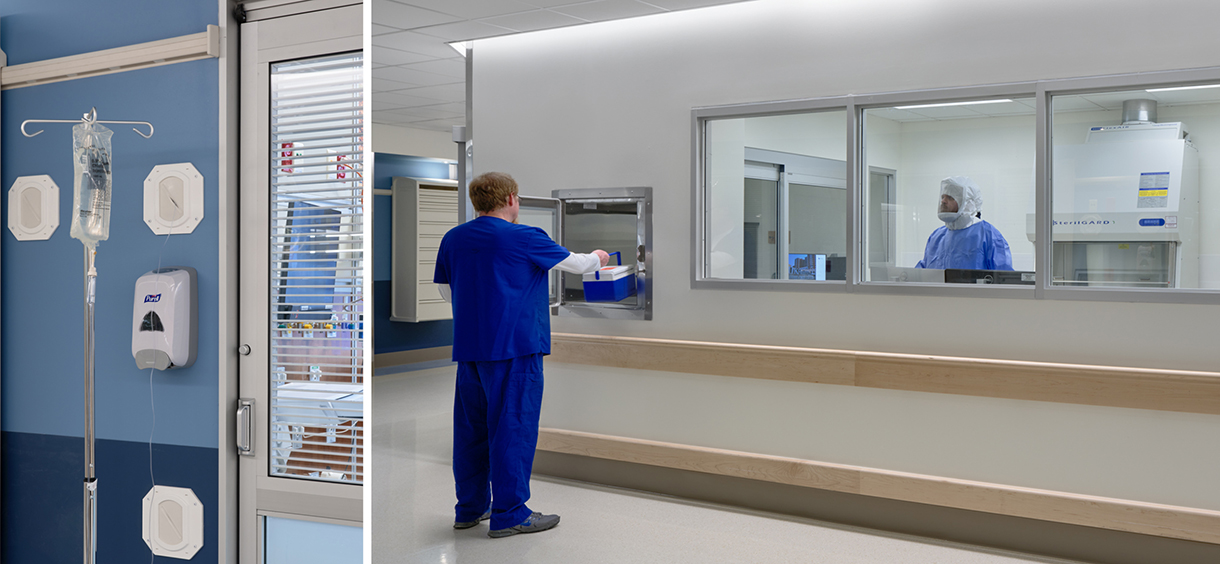 Patient rooms (left image) feature a pass-through that allows intravenous medicine to be administered from outside the room, should a patient pose a communicable disease risk. The 12th floor is home to UK HealthCare's Serious Communicable Disease Lab (right image). As an infectious disease assessment facility, teams at UK Chandler Hospital evaluate and care for patients with population-threatening diseases before they're transferred to larger hospitals.
Patient rooms (left image) feature a pass-through that allows intravenous medicine to be administered from outside the room, should a patient pose a communicable disease risk. The 12th floor is home to UK HealthCare's Serious Communicable Disease Lab (right image). As an infectious disease assessment facility, teams at UK Chandler Hospital evaluate and care for patients with population-threatening diseases before they're transferred to larger hospitals.
Supporting nurses was a key project goal. Interior transparency helps nurses at decentralized stations see each other and feel connected. Private respite areas as well as a communal break room provide opportunities for staff to support each other and decompress to help alleviate burnout.
Using Augmented Reality (AR) in the design process of this ICU significantly increased participant engagement as we worked with UK HealthCare staff to craft a space for top quality care and a sense of well-being. AR allowed staff to provide real-time feedback on the design as it progressed. Using this technology and communication tool allowed the design team to explore different configurations of patient room entries by changing the spacing of windows and doors and the direction of the door swing; it also enabled medical staff to virtually sit at the nurse station and test which window placement provided the ideal view to support their workflow and patient care. Our presentation at the Environmental Design Research Association (EDRA) Conference findings from a UK/GBBN research study informed the project’s respite solutions.
-
News




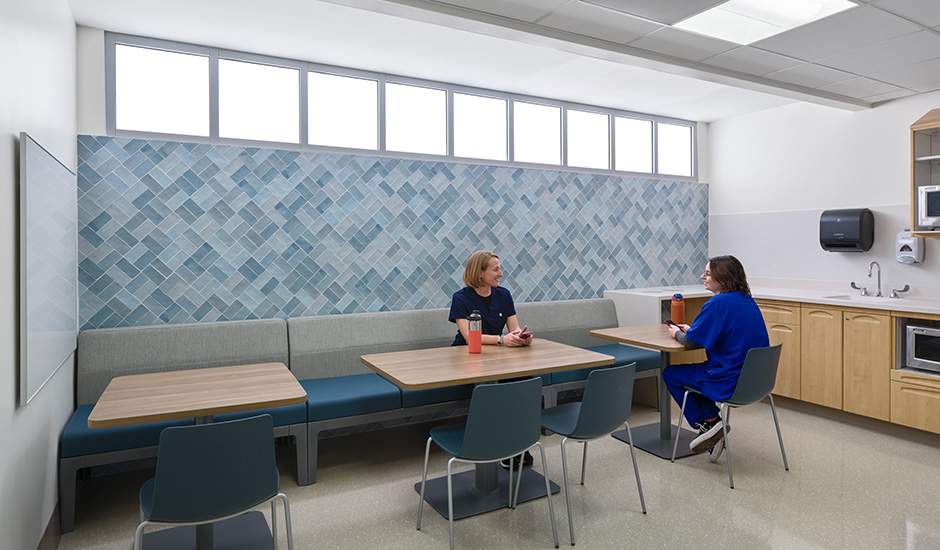 Communal staff space provides the opportunity to recharge together and evokes the sense of daylight through clerestory windows.
Communal staff space provides the opportunity to recharge together and evokes the sense of daylight through clerestory windows.
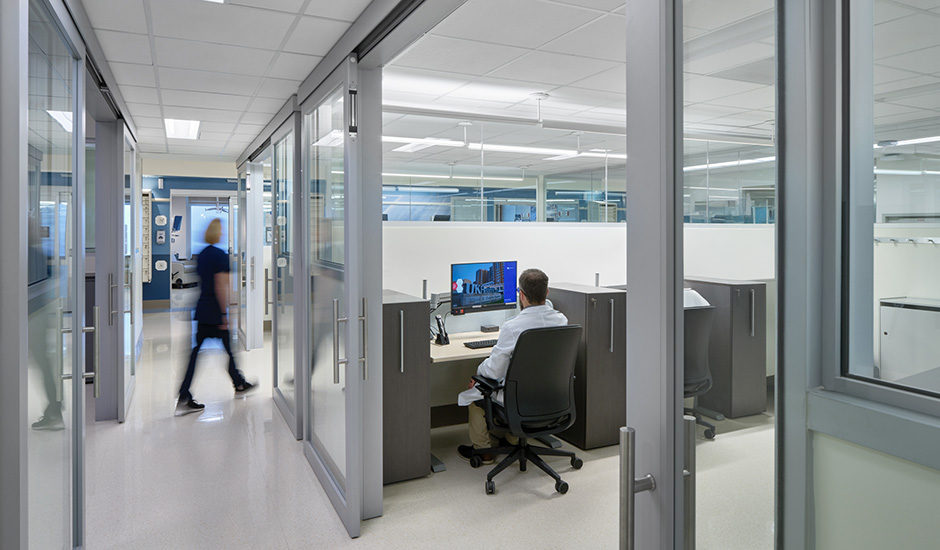 Supporting staff was a key project goal. Interior transparency helps nurses at decentralized stations see each other and feel connected.
Supporting staff was a key project goal. Interior transparency helps nurses at decentralized stations see each other and feel connected.
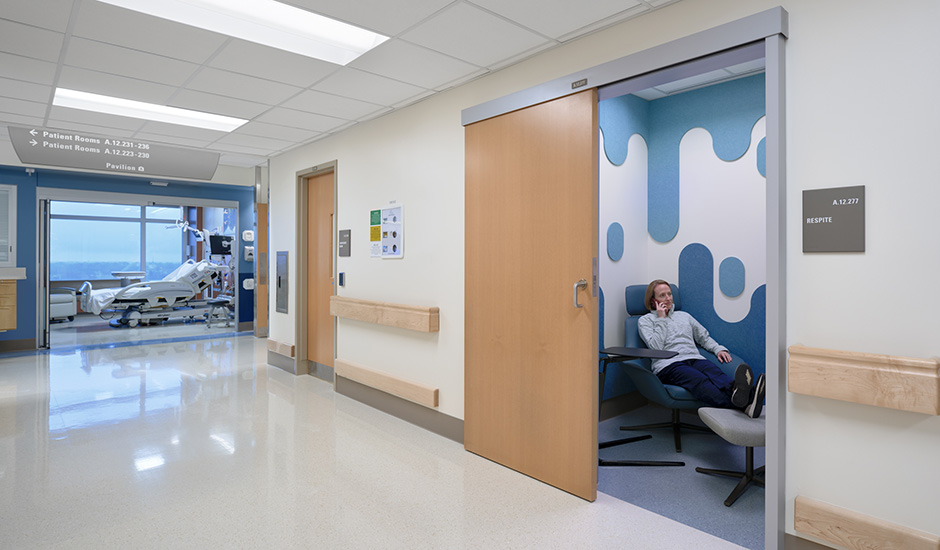 Private respite space the corridor provide nurses and physicians a place to quickly take a break, make a call, or recover from the intensity of the ICU environment.
Private respite space the corridor provide nurses and physicians a place to quickly take a break, make a call, or recover from the intensity of the ICU environment.
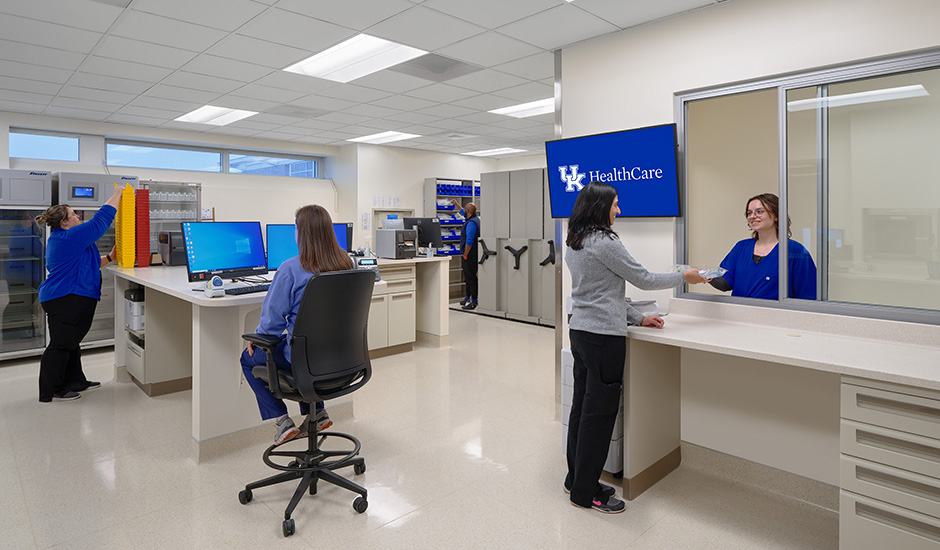 UK HealthCare's 12th floor ICU fit-out has its own dedicated pharmacy.
UK HealthCare's 12th floor ICU fit-out has its own dedicated pharmacy.
